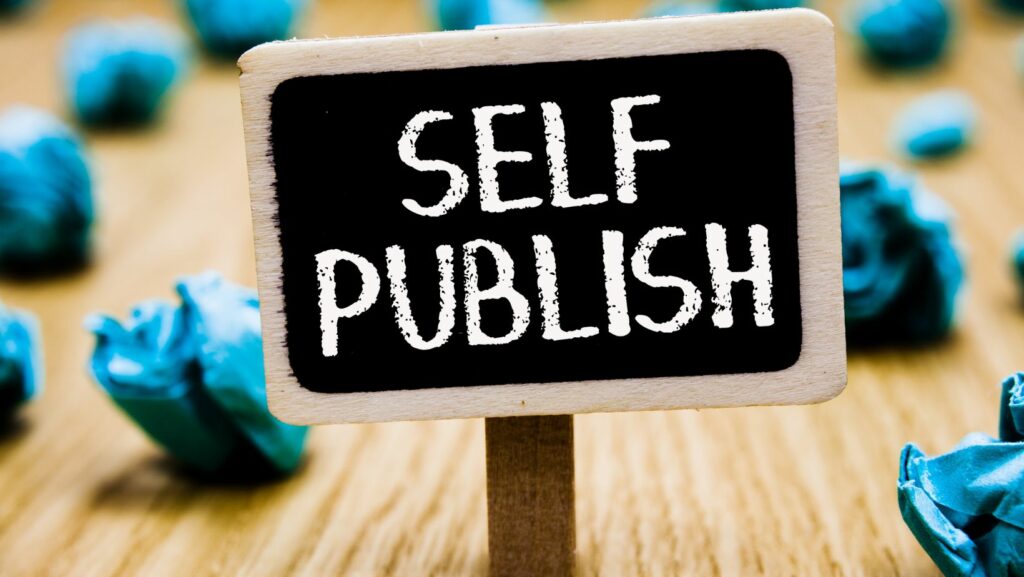Indie Book Publishing
- Indie Book Publishing Defined: Authors take full control of the publishing process, allowing for creative freedom and accessibility without traditional publishing constraints.
- Benefits for Authors: Key advantages include high royalties (60-70%), creative control over content, and faster publication timelines compared to traditional publishing.
- Diverse Narratives: Indie publishing fosters a wider variety of genres and themes, often highlighting stories and voices that mainstream publishers may overlook.
- Marketing Challenges: Indie authors face significant marketing hurdles, needing to develop unique strategies for visibility in a competitive market.
- Success Examples: Notable indie authors, like Hugh Howey and Amanda Hocking, demonstrate the potential for substantial financial success and broader readership via self-publishing.
- Empowerment and Community: The indie publishing movement empowers authors to engage directly with their audience, fostering connections that can lead to dedicated reader communities.
 In recent years, indie book publishing has transformed the literary landscape, empowering authors to take control of their creative journeys. With the rise of digital platforms and print-on-demand services, writers no longer need to rely solely on traditional publishing houses. They can share their unique voices and stories with the world on their own terms.
In recent years, indie book publishing has transformed the literary landscape, empowering authors to take control of their creative journeys. With the rise of digital platforms and print-on-demand services, writers no longer need to rely solely on traditional publishing houses. They can share their unique voices and stories with the world on their own terms.
This shift has opened doors for diverse narratives that often go unheard in mainstream publishing. Indie authors are not just breaking barriers; they’re redefining how readers discover and engage with literature. As the indie movement continues to flourish, understanding its nuances becomes essential for aspiring writers and avid readers alike.
What Is Indie Book Publishing?
Indie book publishing refers to independent publishing practices that allow authors to publish their works without the involvement of traditional publishing houses. This model fosters creative freedom and accessibility in the literary market.
Definition and Overview
Indie book publishing describes the process where authors take charge of the entire publishing cycle, from writing and editing to distribution and marketing. Authors use platforms like Amazon Kindle Direct Publishing, IngramSpark, and Draft2Digital to publish their books digitally or in print. This self-sufficient approach enhances authors’ ability to maintain control over their work, ensuring their unique vision survives unaltered. Many indie authors also leverage social media and personal websites for promotion, forging direct connections with their audiences.
- Creative Control: Authors retain ownership of rights, enabling them to make decisions about content, cover design, and marketing strategies.
- Speed to Market: Indie publishing allows for immediate publication, eliminating long wait times common in traditional publishing.
- Cost Efficiency: Lower overhead costs associated with independent publishing often result in higher royalty rates for authors.
- Diverse Narratives: A broader variety of genres, themes, and voices emerge as indie authors explore topics that may not fit mainstream trends.
- Direct Reader Engagement: Authors establish meaningful connections with readers, often building dedicated communities around their works.
Benefits of Indie Book Publishing
Indie book publishing presents several notable advantages, enhancing the experience for both authors and readers. These benefits include creative control, higher royalties, and more.
Creative Control
Indie authors maintain full creative control over their works. They decide on cover design, editing choices, and marketing strategies. This autonomy fosters originality, allowing authors to express their unique voices without compromise. Additionally, they can easily respond to reader feedback, adjusting future projects to align with audience preferences, making the publishing experience dynamic and interactive.
Higher Royalties
Indie book publishing offers significantly higher royalty rates compared to traditional publishing models. Typically, indie authors earn 60% to 70% of sales revenue, while traditional authors might see only 10% to 15%. This financial benefit empowers authors to reinvest in their writing careers, enabling further development and exploration of diverse projects. Moreover, with direct sales through platforms, authors retain more earnings, creating a sustainable income source as their readership grows.
Challenges in Indie Book Publishing
Indie book publishing presents several challenges that authors must navigate to succeed in the competitive landscape. These challenges primarily include marketing and visibility, along with distribution issues.
Marketing and Visibility
Marketing and visibility pose significant obstacles for indie authors. Many new indie authors lack marketing experience, which can hinder their ability to promote their works effectively. Establishing an online presence through social media platforms and author websites requires continuous effort.
Authors face competition from both traditional publishers and other indie authors, making it crucial to develop unique marketing strategies. Utilizing targeted ads, email newsletters, and virtual book tours can enhance visibility but also necessitates financial investment. Understanding audience demographics helps indie authors tailor their promotions, increasing the likelihood of engaging potential readers.
Distribution Issues
Distribution issues present additional challenges in indie publishing. Unlike traditional publishers, indie authors often struggle to gain access to major retail outlets. Incompatible pricing structures or limited print runs can adversely affect distribution prospects.
Indie authors primarily rely on online platforms such as Amazon and Barnes & Noble for sales, but these avenues can lead to stiff competition. Partnerships with independent bookstores may offer alternatives but require negotiation and relationship-building efforts. Effective distribution strategies, including print-on-demand services, can help broaden reach, yet authors must proactively address logistical concerns to optimize their sales channels.
Steps to Self-Publish an Indie Book
Self-publishing involves several critical steps that authors must follow to ensure a successful launch of their indie book. Each step focuses on key elements of the publishing journey, from manuscript creation to market entry.
Writing and Editing
Authors begin by drafting their manuscripts, focusing on clarity, engagement, and structure. Following this, the editing phase becomes essential. Authors can enlist professional editors or utilize peer feedback to refine their work. Editing targets grammar, flow, and overall coherence. Multiple rounds of editing, including developmental and copy editing, enhance the manuscript’s quality. Authors also engage beta readers for additional insights, ensuring the final product resonates with the target audience.
Designing a Book Cover
Book cover design plays a significant role in attracting potential readers. Authors should invest in professional graphic designers who understand genre conventions and market trends. Cover elements include imagery, typography, and color schemes that align with the book’s themes. Authors should request several design concepts and select one that captures the essence of their work. High-quality cover design is essential for standing out in a crowded market.
Choosing Distribution Channels
Selecting the right distribution channels maximizes a book’s visibility. Authors can choose between various platforms such as Amazon Kindle Direct Publishing, IngramSpark, and Draft2Digital. Each platform offers unique advantages regarding reach, royalty rates, and ease of use. Authors should evaluate their goals and target audience before finalizing their choices. Strategies may involve both digital and print options, utilizing print-on-demand services to minimize upfront costs. Effective distribution enhances accessibility and increases sales potential across multiple markets.
Success Stories in Indie Book Publishing
Indie book publishing has led to remarkable successes, showcasing authors who’ve flourished through self-publishing. These stories highlight the significant impact indie publishing has on both authors and the broader literary community.
Notable Indie Authors
- Hugh Howey – Hugh Howey gained fame with his dystopian series Wool. Initially self-published, it reached bestseller status, leading to a traditional publishing deal. His experience exemplifies how indie authors can leverage success to expand their reach.
- Amanda Hocking – Amanda Hocking transformed her career by self-publishing paranormal romance novels. She sold over a million copies, earning millions in revenue. Her story illustrates the potential for indie authors to achieve significant financial success.
- E.L. James – E.L. James self-published Fifty Shades of Grey, which became a global phenomenon. Initially released as an e-book, it garnered massive attention, leading to a lucrative film adaptation. This success underscores the power of indie publishing in reaching mainstream audiences.
- Ben Galley – Ben Galley utilized a strategic marketing approach to self-publish his fantasy novels. He engaged readers on social media and built a loyal following, reflecting the importance of direct author-reader interaction in the indie landscape.
- Diversification of Genres – Indie publishing has introduced a broader array of genres and themes. This diversification caters to niche markets, allowing readers access to unique stories that traditional publishers often overlook.
- Changing Market Dynamics – Indie authors challenge the traditional publishing model by directly influencing market trends. As they gain visibility, publishers adapt strategies to compete for readers’ attention, illustrating how indie success reshapes industry norms.

- Empowerment of Authors – Indie publishing empowers authors to take control of their careers. With creative freedom, authors have the autonomy to make decisions that resonate with their target audience. This shift significantly alters author-reader dynamics and fosters community engagement.
- Financial Disruption – The high royalty rates associated with indie publishing disrupt the traditional publishing financial model. Authors earning 60% to 70% of sales revenue demonstrate a more sustainable income path. This financial advantage encourages more writers to explore self-publishing.
These success stories and impacts underline the transformative role of indie book publishing in the literary landscape.
Writers Can Thrive Outside Traditional Publishing Constraints
Indie book publishing has revolutionized the literary world by giving authors the freedom to share their stories on their own terms. This shift not only fosters creativity but also encourages a rich diversity of voices and narratives that might otherwise remain unheard. As the indie movement continues to grow, it’s clear that writers can thrive outside traditional publishing constraints.
For aspiring authors navigating this landscape, understanding the dynamics of indie publishing is crucial. By leveraging digital platforms and engaging directly with their audience, they can carve out unique spaces for their work. The journey may come with challenges, but the rewards of creative control and higher royalties make it a compelling option for many.



